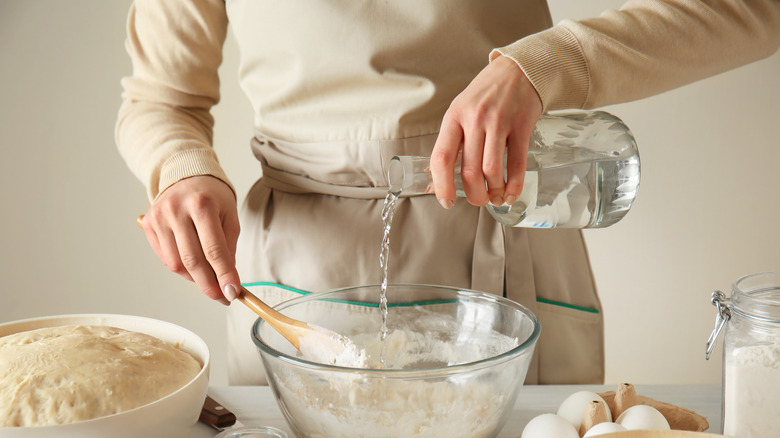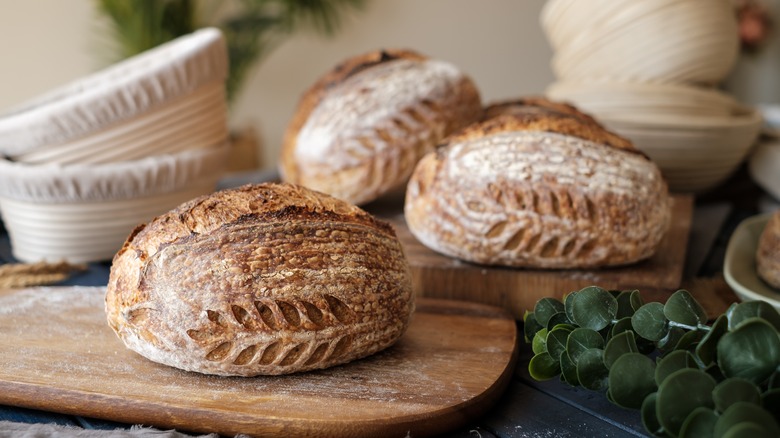Why Hydration Is Key To Baking An Open-Crumb Bread Loaf
As any aspiring bread baker knows, it takes a lot to pull off a great open-crumb bread loaf. You have to choose the right flour for the job, and your fermentation has to be spot on. Some variables can derail your dough, too, like how the temperature in your kitchen can throw things off or a chilly starter can make your ingredients act sluggish. While all of those moving parts are important, if you want an open-crumb bread loaf with nice volume and those coveted air pockets you see in a sourdough or focaccia done right, higher hydration makes all of the difference.
Choosing a higher hydration gives your dough the elasticity it needs to be a good partner with strong gluten. Indeed, strong gluten development is pivotal since it catches and holds the CO2 from yeast. A dough that does not have enough stretch will not rise, however. This is where higher hydration comes into play, because it makes the dough "extensible" or able to stretch without tearing.
The exact amount of water you will need varies depending on the open-crumb recipe you are tackling. The traditional hydration percentage for sourdough bread is around 70%. If you're taking on a ciabatta recipe or a focaccia bread recipe, however, the necessary hydration is commonly closer to 85%.
What does hydration percentage mean?
Hydration percentage is simply the ratio of flour to water. For instance, 70% hydration means that, if you're using 1,000 grams of flour, you'll use 700 grams of water. In other words, the weight of your water divided by the weight of your flour is your hydration percentage. If that's confusing, there are calculators to help.
If you're new to making open-crumb breads, note that such recipes with lower hydration percentages tend to be for beginners, since that dough is a little easier to handle. As you develop your skills and advance to higher hydration percentages, that dough will be sticky.
If you're working with a stickier dough, keep a little glass of water next to your bowl and dip your fingers in it as often as necessary so you can continue to easily (and gently) fold and stretch the dough. There are several ways to manage your dough, from folding it over onto itself while turning your bowl in a circle, to a "coil fold" that involves lifting your dough, letting it stretch a little, then letting it fall forward back into the bowl.
Managing highly hydrated dough without overworking it takes practice. There are some common mistakes people make when baking sourdough and other breads, so you may need to add another ingredient to the many moving parts of baking open-crumb bread: patience!

